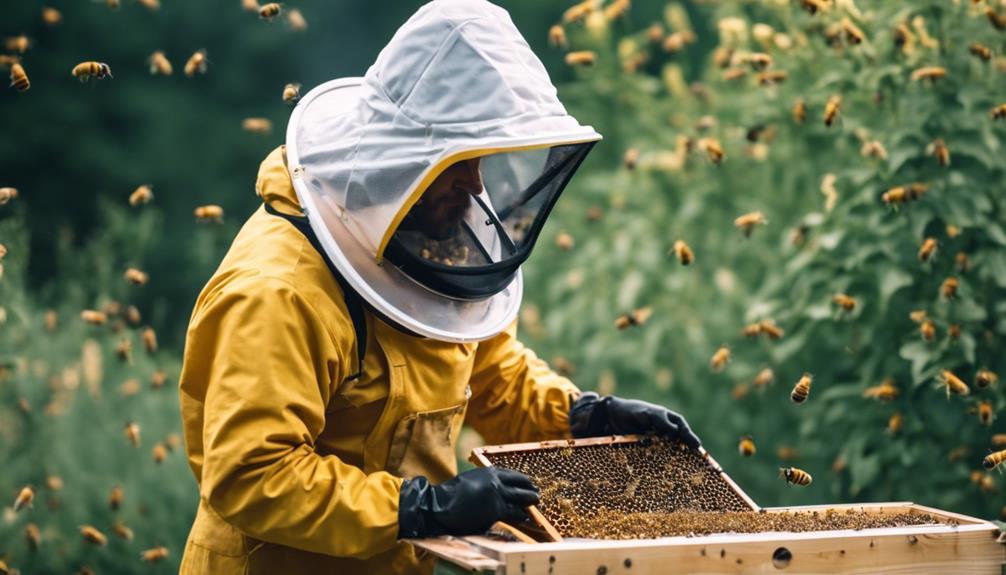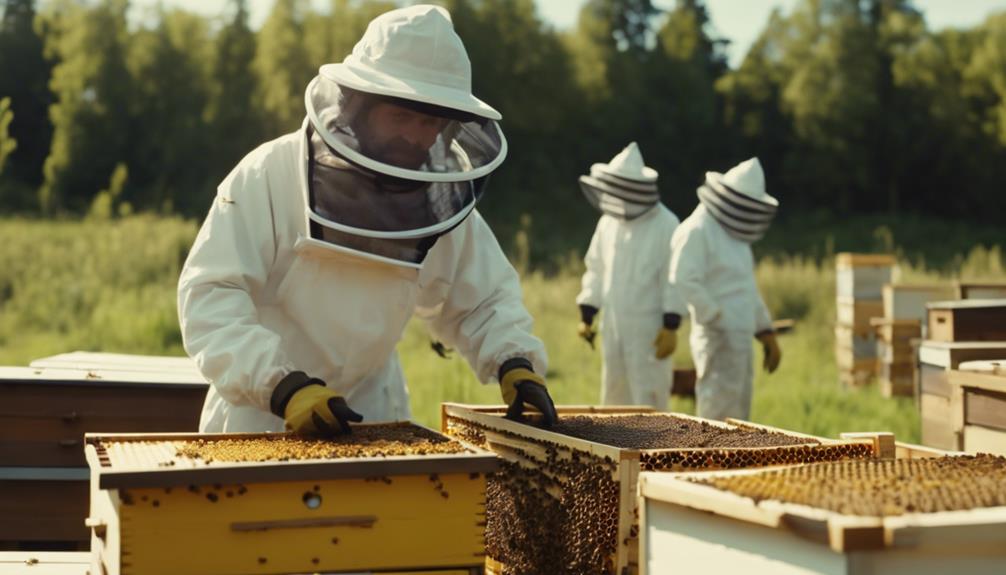In the realm of apiculture, the art of ancient beekeeping is a practice steeped in tradition and craftsmanship that has been passed down through generations.
The meticulous handling of bees and their hives, the delicate dance between beekeeper and colony, holds secrets that modern practices often overlook.
As we explore the intricate steps of mastering this age-old craft, we uncover methods that not only sustain these vital pollinators but also yield a bounty of golden honey and beeswax.
Join us as we journey through the ancient wisdom of beekeeping, step by step, unraveling the mysteries that have stood the test of time.
Key Takeaways
- Choose a sunny, wind-protected location for hive placement.
- Regular hive inspections are crucial for colony health.
- Harvest honey using extraction methods like centrifuge or crush and strain.
- Proper queen bee management is vital for colony sustainability.
History of Ancient Beekeeping
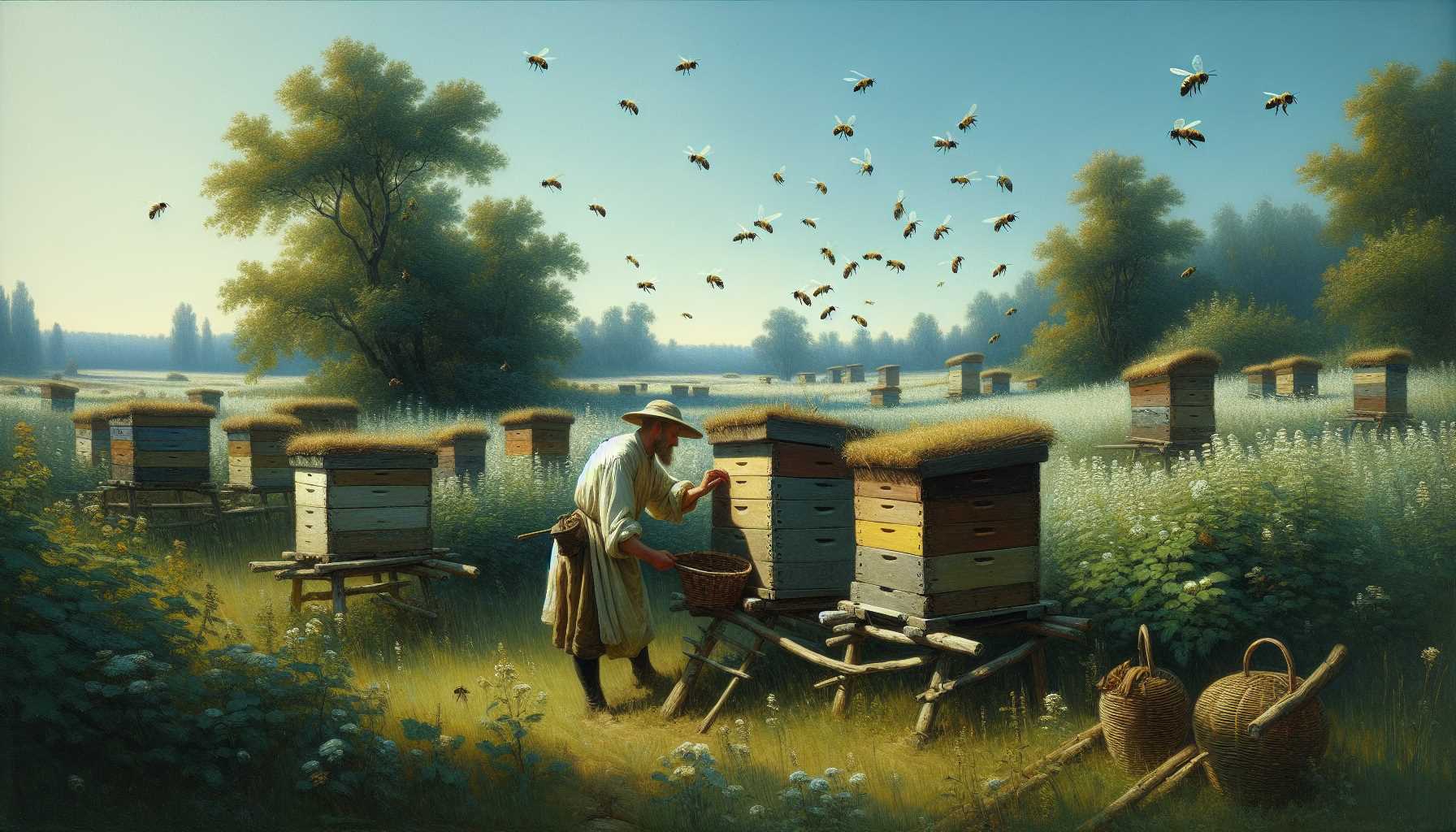
Ancient beekeeping traces back thousands of years, showcasing the intricate relationship between humans and honeybees throughout history. Beekeeping techniques in ancient times varied across different cultures, with methods evolving alongside human societies. In Egypt, elaborate hieroglyphics depicted beekeepers using smoke to calm bees and collect honey, highlighting the early understanding of bee behavior. The Greeks and Romans also practiced beekeeping, with Aristotle documenting hive management and honey extraction methods. These ancient civilizations recognized the cultural significance of bees, associating them with deities like Artemis and Apollo.
Beekeeping was not just a means of harvesting honey but also held symbolic importance in religious ceremonies and folklore. The practice of beekeeping transcended mere sustenance, becoming deeply intertwined with cultural beliefs and traditions. As societies developed, beekeeping techniques advanced, leading to innovations in hive design and honey extraction. Understanding the history of ancient beekeeping provides valuable insights into the profound connection between humans and bees, shaping our relationship with these essential pollinators.
Tools and Equipment Needed
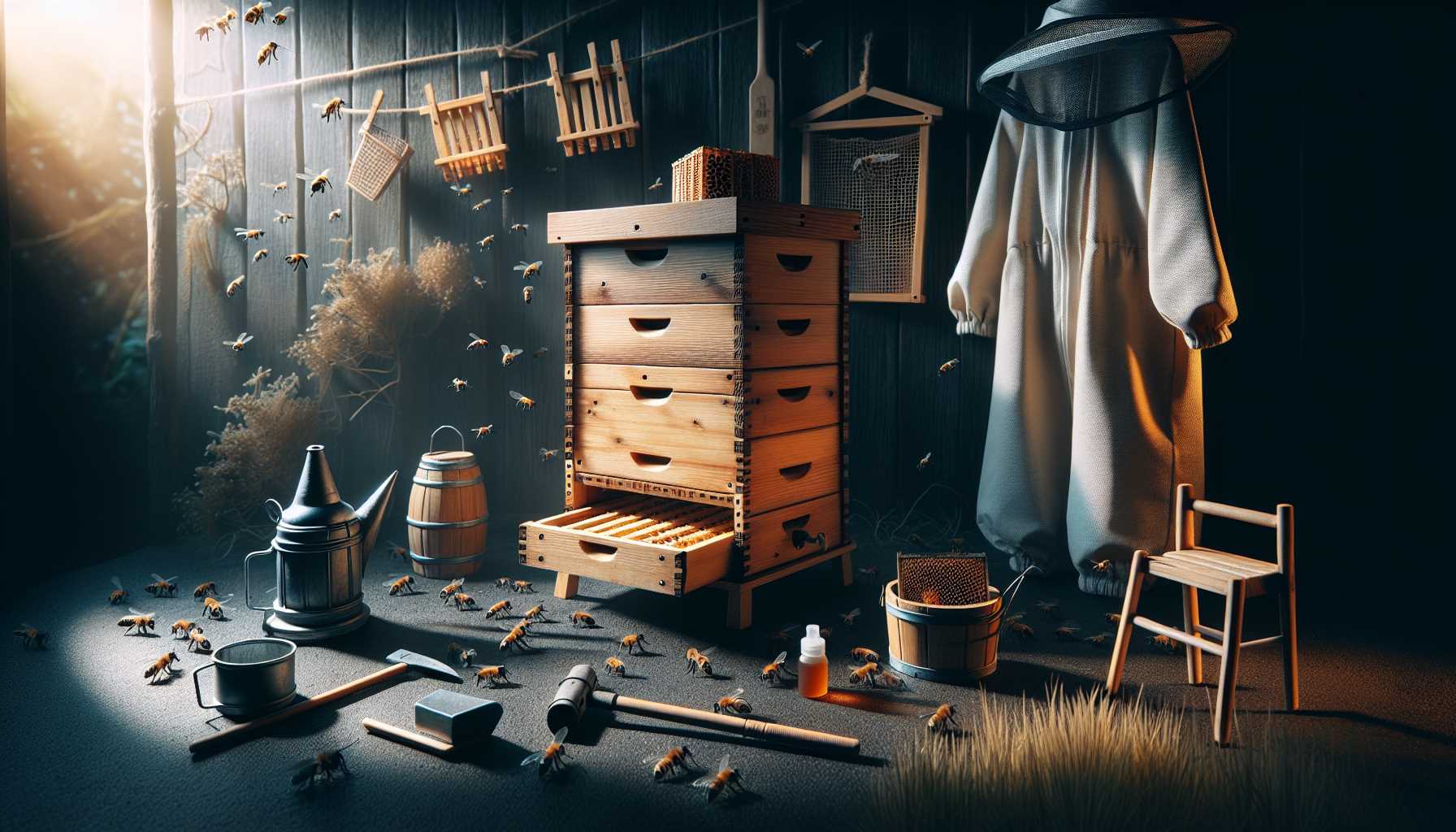
In the practice of beekeeping, essential tools and equipment play a crucial role in ensuring the efficient management of hives and the extraction of honey. To be well-prepared for beekeeping tasks, the following items are indispensable:
- Beekeeping Attire: Proper beekeeping attire is vital to ensure safety during hive inspections and honey extraction. This includes a beekeeping suit, gloves, and a veil to protect against bee stings. Regular maintenance of beekeeping attire is essential to ensure its effectiveness in safeguarding beekeepers.
- Smoker: A smoker is a valuable tool used to calm bees during hive inspections and troubleshooting activities. It helps mask alarm pheromones released by bees when the hive is disturbed, making the inspection process smoother and less disruptive.
- Hive Tool: A hive tool is a multipurpose instrument that aids beekeepers in prying apart hive components, scraping off propolis, and lifting frames for inspection. It is a must-have tool for efficiently managing hives and conducting necessary maintenance.
- Bee Brush: A bee brush is essential for gently brushing bees off frames and hive components during inspections. This tool helps beekeepers work with bees without harming them and ensures a clear view of the hive’s interior.
Setting Up Your Beehive
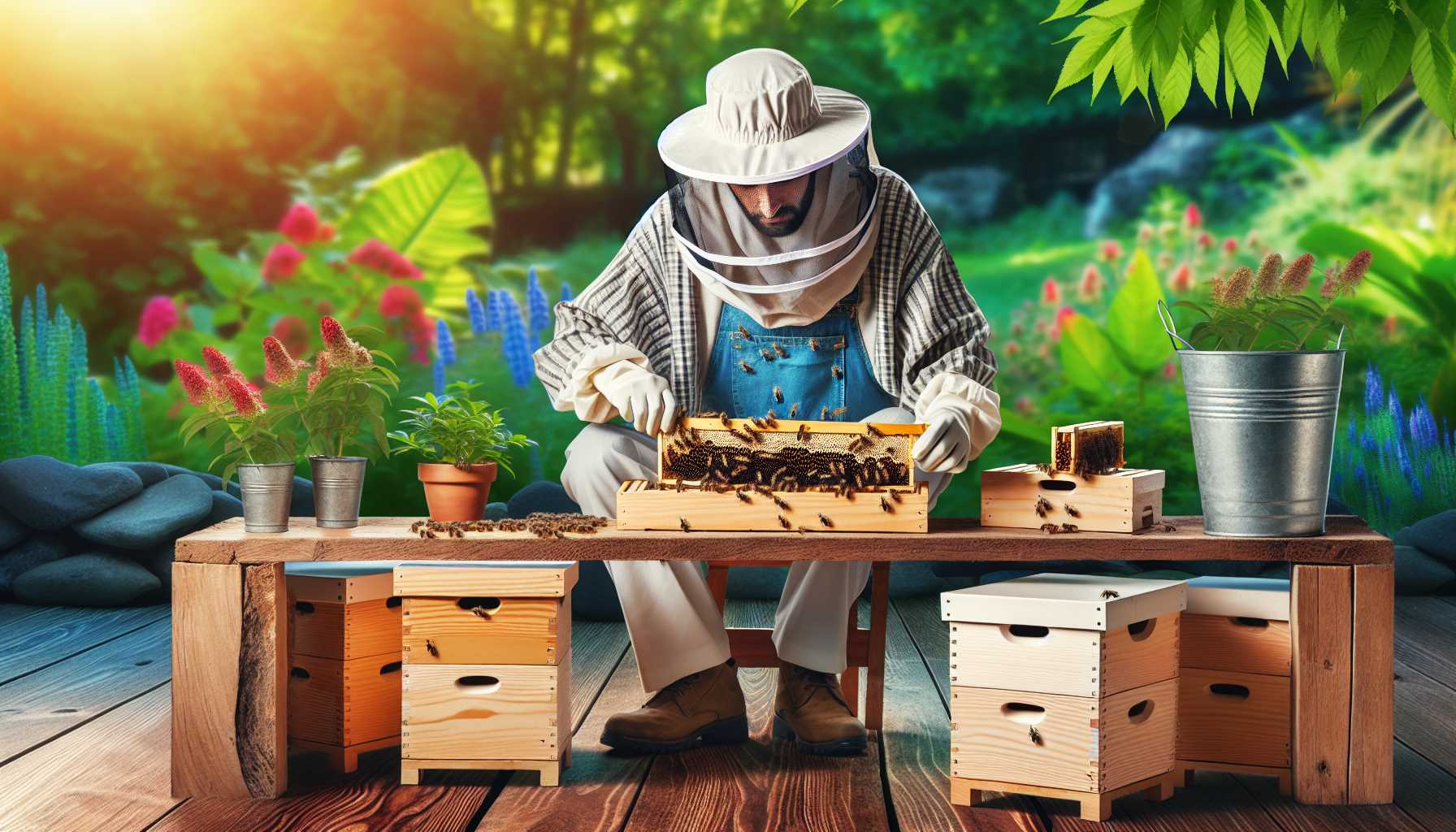
To establish a functional beekeeping operation, the initial step involves meticulously setting up your beehive in a suitable location that caters to the needs of the bees and facilitates efficient hive management. When selecting a bee hive location, consider placing it in an area with access to sunlight, protection from strong winds, and a source of fresh water nearby. Ensure the hive entrance faces east or south to receive the morning sun, which encourages the bees’ early activity. Additionally, avoid placing the hive in low-lying areas prone to flooding or areas with excessive shade, as this can impact the bees’ foraging behavior.
Conduct regular hive inspections using proper techniques to monitor the health and productivity of the colony. When inspecting the hive, work methodically, checking each frame carefully for signs of disease, pests, or the overall condition of the brood and honey stores. Use a smoker to calm the bees before opening the hive to reduce disturbances. By maintaining a well-situated hive and performing thorough inspections, you can ensure a successful and thriving beekeeping operation.
Managing Bee Colonies
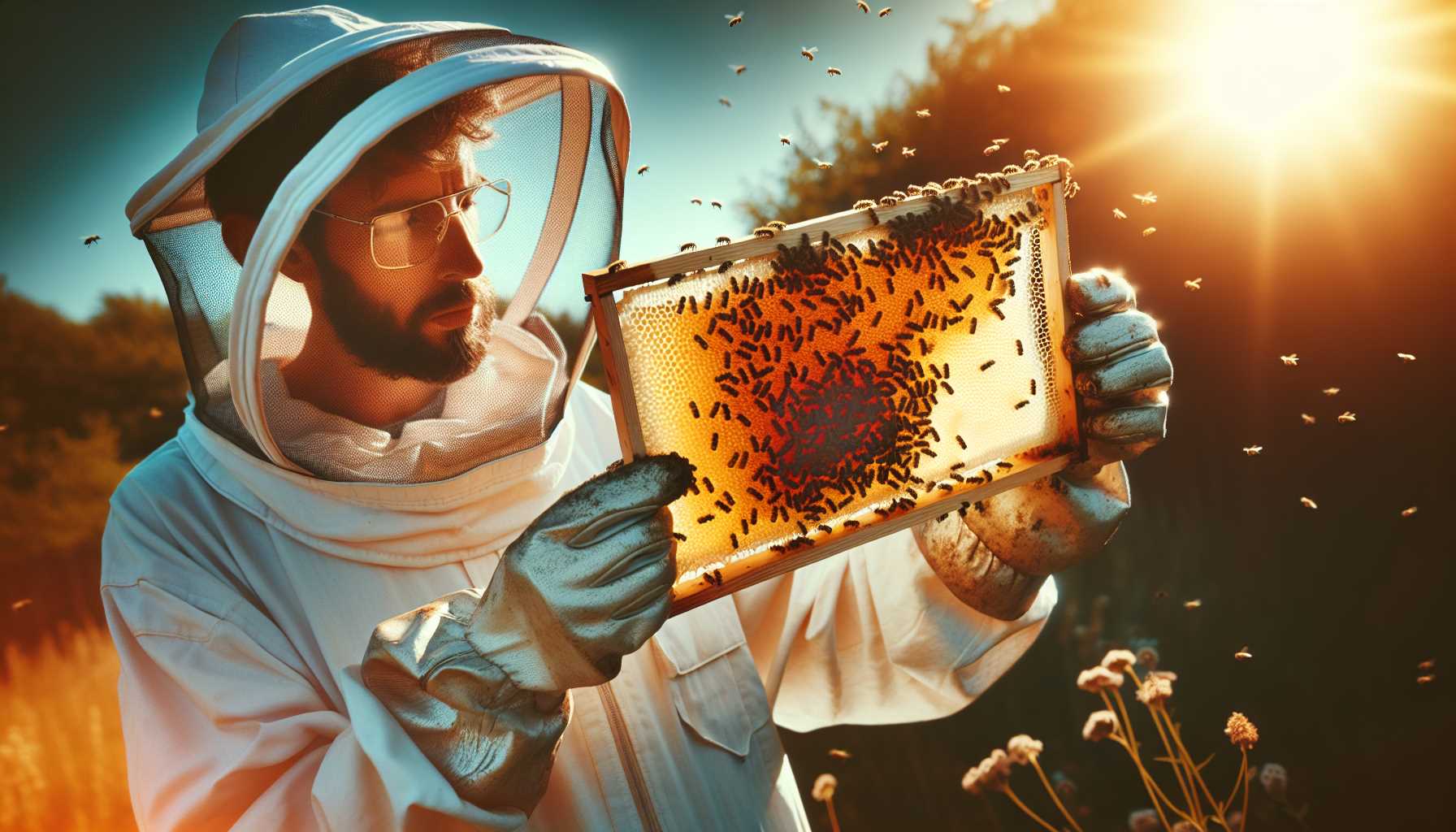
Establishing a successful beekeeping venture requires diligent management of bee colonies to ensure their health, productivity, and sustainability over time. To effectively manage bee colonies, consider the following:
- Queen Bee Management: The queen bee is the heart of the colony, responsible for laying eggs and maintaining harmony. Regularly check the queen’s health and activity to ensure a thriving colony.
- Hive Inspection Techniques: Conduct regular hive inspections to monitor the overall health of the colony. Look for signs of disease, pests, or issues with honey production. Address any concerns promptly.
- Brood Pattern Assessment: Evaluate the brood pattern within the hive. A healthy colony will have a consistent brood pattern with larvae at different stages of development. Irregular patterns may indicate problems.
- Supers and Honey Stores: Monitor the supers (additional boxes where bees store excess honey) and honey stores. Ensure the bees have enough space to expand and store honey properly. Harvest excess honey responsibly to maintain hive health.
Harvesting Honey and Beeswax

For successful beekeeping ventures, a meticulous approach to harvesting honey and beeswax is essential to maintaining a sustainable operation. When it comes to honey extraction techniques, beekeepers have several options. The most common method involves the use of a centrifuge to extract honey from the honeycombs. This process is gentle on the honeycomb, allowing it to be reused by the bees.
Another technique is crush and strain, where the honeycomb is crushed to release the honey, which is then strained to remove any debris.
Beeswax, a valuable byproduct of honey harvesting, has numerous uses. It can be used to make candles, cosmetics, and even as a natural wood polish. To harvest beeswax, beekeepers typically collect the honeycomb after extracting the honey. The honeycomb is then melted down and filtered to remove impurities, resulting in pure beeswax ready for use.
Frequently Asked Questions
Can Ancient Beekeeping Techniques Be Adapted for Modern Beekeeping Practices?
In exploring the fusion of ancient beekeeping techniques with modern practices, the integration of sustainable practices and modern technology can enhance beekeeping efficiency. Historical techniques find new life in contemporary applications, fostering a harmonious coexistence between tradition and innovation.
What Are Some Common Challenges Faced When Practicing Ancient Beekeeping Methods?
Challenges in ancient beekeeping include pest management, limited hive protection, and harvesting difficulties. Solutions may involve integrating modern techniques like using protective gear, introducing hive monitoring systems, and enhancing honey extraction methods to overcome these obstacles.
How Did Ancient Beekeepers Protect Themselves From Bee Stings?
Ancient beekeepers protected themselves from bee stings by wearing protective clothing made of thick fabric, such as leather or thick linen. They also used smoke techniques to calm bees and herbal remedies/natural repellents to deter stings.
Are There Any Health Benefits Associated With Consuming Honey Produced Through Ancient Beekeeping Methods?
Consuming honey produced through ancient beekeeping methods can offer various health benefits due to its high nutritional value. Traditional methods of beekeeping often yield honey with unique properties that can still be appreciated in modern applications.
How Did Ancient Civilizations View Bees and Beekeeping in Terms of Spirituality or Cultural Significance?
Ancient civilizations revered bees and beekeeping for their spiritual connections and cultural significance. Bees symbolized purity, diligence, and community in spiritual rituals, while beekeeping was woven into cultural practices, reflecting harmony with nature and the divine.

Hello! My name is Noel Calvin. I graduated from UCLA and now work as a writer at Launch Ninjas. I write blog posts that inspire and guide our readers in their entrepreneurial pursuits. I live in Pleasantville, NJ, with a peaceful yet lively atmosphere that inspires me.
Writing stories is more than just a job for me. It allows me to share my observations and satisfy my curiosity about the world. I combine my analytical skills with creative enthusiasm to delve into technology trends and startup stories. But my life isn’t limited to screens and keyboards. I value loyalty, passion, and a touch of old-fashioned charm, which I infuse into every narrative I create.
I love spending time in my garage, jamming with my band when I’m not writing. Playing the guitar and singing bring me immense joy. I also enjoy capturing ordinary and extraordinary moments through my camera lens and exploring new culinary adventures that excite my taste buds. I’m always seeking new experiences.
My family is very important to me. Joyful Sunday brunches filled with laughter and intense board game nights keep me grounded, reminding me of life’s simple pleasures.
In my world, every moment is an opportunity for discovery. Every discovery is a story worth sharing, whether a heartfelt moment at home or the pulse of technological innovations. Join me as I navigate through life, one blog post, one guitar strum, and one heartwarming family dinner at a time.

